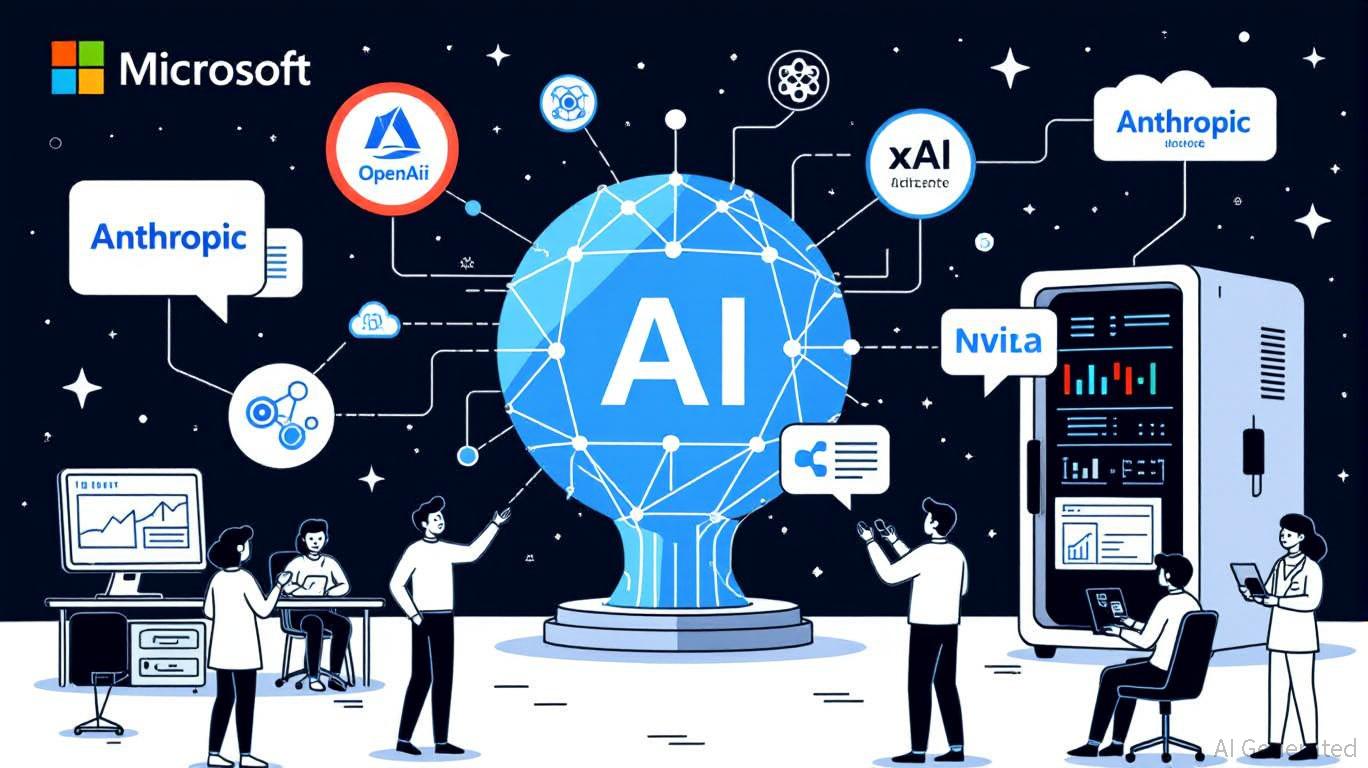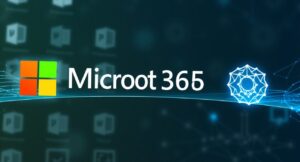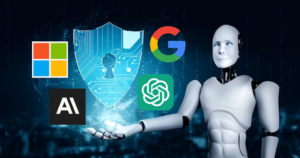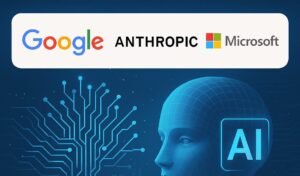Microsoft’s planned shift to Anthropic’s AI: what it means for Office, OpenAI, AWS — and the future of corporate AI sourcing
Published — September 10, 2025
Microsoft’s AI strategy hit a new inflection point this week: reporters say the company will start paying to use Anthropic’s advanced Claude models for some features inside Office 365 (Word, Excel, Outlook and PowerPoint), moving away from an exclusive reliance on OpenAI while still keeping OpenAI as a partner. The change — described in reporting by The Information and widely picked up by outlets including Reuters, TechCrunch and Windows Central — is being framed inside Microsoft as a pragmatic, performance-driven diversification of suppliers for its productivity AI. The InformationReutersTechCrunch
Below I unpack why Microsoft is doing this, what the technical and commercial drivers are, who the winners and losers may be, and how this fits into a larger industry shift toward multi-supplier AI stacks.
Quick summary (TL;DR)
-
Microsoft will incorporate Anthropic’s Claude (reportedly Sonnet 4 in internal tests) into Office 365 features, alongside continued use of OpenAI models. ReutersPYMNTS.com
-
Internal tests reportedly showed Anthropic’s models outperforming OpenAI on some productivity tasks (e.g., Excel automation, slide design), which prompted Microsoft to adopt a hybrid approach. ReutersTechRepublic
-
Microsoft will access Anthropic’s models via Amazon Web Services (Anthropic’s cloud partner), meaning Microsoft will pay AWS for usage — a notable cross-cloud commercial flow. Reuters
-
This is not a clean break from OpenAI; rather, it’s a strategic diversification that lowers vendor concentration risk while optimizing for task-specific model strength. TechCrunch
Why Microsoft would add Anthropic: performance, risk management, and leverage
There are three pillars that explain Microsoft’s move: (1) performance (models that are better at specific tasks), (2) risk and supply diversification (don’t put all your AI eggs in one vendor), and (3) strategic leverage (having multiple providers improves negotiating posture and reduces single-point-of-failure risk).
1. Performance: models are heterogeneous
Large models excel at different tasks. According to reporting, Anthropic’s Claude Sonnet 4 performed better than competing models in Microsoft’s internal evaluations on a few targeted Office tasks — notably automating financial functions in Excel and generating better-looking, slide-friendly content for PowerPoint. For product teams building end-user features, a measurable performance win for certain tasks is a straightforward reason to route those requests to the stronger model. ReutersTechRepublic
2. Diversification reduces operational and business risk
Microsoft has been deeply tied to OpenAI for years (including large investments and product integrations). But relying on a single external supplier for core productivity features creates exposure: commercial disputes, governance changes at that supplier, or infrastructure shifts (e.g., if OpenAI runs on non-Microsoft cloud hardware) could all affect Microsoft’s product roadmap. Adding Anthropic spreads that risk and gives Microsoft more control over continuity. TechCrunch
3. Leverage and bargaining power
When multiple vendors compete for the same integration, the buyer (here, Microsoft) gains leverage: better pricing, more favorable SLAs, access guarantees, and technical influence. Microsoft is simultaneously a partner, investor, and important customer in the AI ecosystem; by working with multiple model providers, it can push for improved features and terms without being hostage to a single roadmap.
The cloud wrinkle: Microsoft paying AWS to access Anthropic
One of the most headline-grabbing details is that Microsoft will access Anthropic’s models through Amazon Web Services, Anthropic’s cloud partner. That means Microsoft — which operates its own Azure cloud business and competes with AWS — will route money to a cloud rival to power productivity features for Office customers. On its face, this is an awkward commercial loop, but it underscores a few realities:
-
Modern generative-AI services are separable: model provider (Anthropic) + cloud host (AWS) + customer/product (Microsoft’s Office) can be different entities. Reuters
-
Microsoft’s decision shows pragmatism: performance and product needs can trump cloud-pure strategies. If a non-Azure-hosted model outperforms alternatives for certain tasks, a customer will pay to use it. TechCrunch
This arrangement highlights friction between cloud ownership and best-in-class ML — Microsoft must balance Azure’s strategic interests against delivering the best product to Office users.
What this means for OpenAI and Microsoft’s relationship
Microsoft remains a major OpenAI backer and partner; the reported Anthropic deal is explicitly not a full replacement. Instead, Microsoft appears to be moving to a multi-source model where different LLMs are called upon for different features depending on strengths, latency, cost and safety characteristics. That approach has several effects:
-
OpenAI still matters: high-end conversational and generative features will likely still rely on OpenAI where its models lead or where historic integrations are costly to replace. TechCrunch
-
Competitive pressure: OpenAI gains an incentive to improve task-specific performance and commercial terms to retain Microsoft’s business. Competition may accelerate product improvements but could also create commercial tension. Seeking Alpha
-
Contract and governance complexity: Microsoft and OpenAI have complex commercial and legal ties (including prior investment and IP arrangements). Adding Anthropic complicates those dynamics and could lead to renegotiations or tighter contractual safeguards.
Put simply: this is a partial pivot, not a public breakup. But it does signal that Microsoft is no longer locked into a single external model supplier for its productivity stack. Reuters
Product implications: which Office features will change (and how)
According to reporting, Microsoft tried Anthropic models against real Office use cases, and the Claude models produced better results in some scenarios. Practically, users could see differences like:
-
Excel: better automation of complex financial and formula-driven tasks, more reliable data transformations and error handling for spreadsheets. Reuters
-
PowerPoint: more visually aware slide generation, improved design recommendations and automated formatting that reduces the manual design burden. PYMNTS.com
-
Outlook and Word: potential improvements in summarization, drafting, and context-sensitive suggestions where Claude’s style or reasoning was judged superior in tests.
Under a hybrid setup, Office may route certain “intents” to the model that best matches the task (e.g., spreadsheet computations → Anthropic; open-ended creative drafting → OpenAI), with Microsoft orchestrating which backend to use. That orchestration layer becomes a new product and engineering challenge — matching latency, cost, privacy requirements and safety guardrails across providers. TechRepublic
Safety, compliance and governance: a higher bar in enterprise
Large enterprises like Microsoft don’t decide on model suppliers only based on raw benchmark scores. They weigh safety, auditability, data residency, compliance, and explainability. A multi-vendor approach raises governance questions:
-
Data flows: which customer inputs are sent to which external model? Are any customer documents routed off-platform or outside regional data boundaries? Microsoft will need strict controls and transparency for enterprise customers. Reuters
-
Uniform safety policies: Anthropic, OpenAI and Microsoft each have different safety systems and content policies. Microsoft must create a consistent user experience and safety posture across models, or risk fragmentation. TechRepublic
-
Auditing & compliance: enterprise customers (and regulators) will demand clear audit trails about which model produced what output and why.
If Microsoft can harmonize governance while still selecting best-of-breed models by task, it may set a template for future corporate AI sourcing.
Competitive & strategic ripple effects across the AI ecosystem
For Anthropic
This is a major commercial validation. Anthropic will gain a marquee customer and distribution into the world’s most widely used productivity suite — a clear win for market credibility and enterprise adoption. The AWS tie-in also deepens Anthropic’s commercial moat. Reuters
For OpenAI
OpenAI may feel strategic pressure, especially given Microsoft’s prior investments and deep product integrations. This could accelerate OpenAI’s efforts to optimize task-specific performance, diversify cloud hosting, or rework commercial terms. It may also influence OpenAI’s longer-term product and partnership strategy. TechCrunch
For cloud providers (AWS vs Azure)
The commercial loop (Microsoft paying AWS to access Anthropic-hosted models) is a fascinating sign of cross-cloud interdependence. It suggests that cloud boundaries are porous where best-in-class services exist, and it will force cloud providers to think beyond just IaaS — the platform-level AI services they host are strategic leverages. Reuters
Customer perspective: will pricing or availability change?
Reporting indicates Microsoft does not plan to raise Office AI pricing as part of this move; rather, it appears to be an optimization of backend systems to improve capability. From the end-user view, the change should be invisible except for improved results on certain tasks. Enterprise customers, however, may want clarity on data residency, model provenance, and which backend generated outputs for compliance reasons. ReutersPYMNTS.com
Potential downsides and risks
-
Vendor lock-in flips: While diversifying reduces risk from a single supplier, it increases operational complexity and can produce lock-in to orchestration layers or custom routing logic.
-
Interoperability & maintenance: Maintaining multiple integrations, different model APIs, and distinct update cadences is costly.
-
Regulatory scrutiny: As governments scrutinize AI, cross-border data flows (e.g., Microsoft → AWS → Anthropic) could trigger regulatory questions in privacy-sensitive jurisdictions.
-
Commercial blowback: OpenAI may respond commercially (e.g., preferential pricing or exclusive features) to keep Microsoft’s business, which might intensify competition and complexity.
What this move reveals about the next phase of enterprise AI
Microsoft’s reported decision illustrates a broader maturation in the AI industry: we’re moving from monolithic model dependence to an ecosystem model where enterprises assemble best-of-breed capabilities from multiple providers, and the value shifts to orchestration, safety, and productization.
In effect:
-
Models become modular components in a larger product architecture.
-
The company that best orchestrates models, enforces safety, manages costs, and preserves data governance will hold major commercial advantage.
-
The cloud landscape will continue to be competitive, but platform-neutral services (hosted on one cloud) can still be integrated when they deliver clear product gains.
Bottom line
Microsoft’s reported decision to pay for Anthropic’s models for some Office 365 features is a pragmatic step toward optimizing product outcomes and lowering supplier-concentration risk. It demonstrates that even a deeply invested partner like OpenAI is not a guaranteed sole source when other models outperform on real, user-facing tasks. The deal also underlines the complexity of modern AI stacks — where model quality, cloud hosting, governance, and orchestration all matter.
For customers, the immediate effect should be better Office AI for specific tasks. For the industry, the move marks a shift toward multi-supplier sourcing and throws the spotlight on companies that can manage the orchestration, safety and compliance layers that make multi-model deployments practical at scale. ReutersTechCrunchTechRepublic
Sources and further reading
Selected reporting used in this article (published September 9–10, 2025): The Information (original report on Microsoft-Anthropic plans), Reuters coverage, TechCrunch analysis, Windows Central, and TechRepublic/other trade outlets. The InformationReutersTechCrunchWindows CentralTechRepublic
For quick updates, follow our whatsapp channel – https://whatsapp.com/channel/0029VbAabEC11ulGy0ZwRi3j
https://bitsofall.com/https-yourblog-com-arms-new-mobile-chips-lumex-mali-g1-ultra-ai-on-your-phone/
https://bitsofall.com/https-yourblog-com-deepseek-v3-open-champion-for-code-vs-gpt4-llama3-1/
Alibaba: Releasing the new Qwen model to improve AI transcription tools







